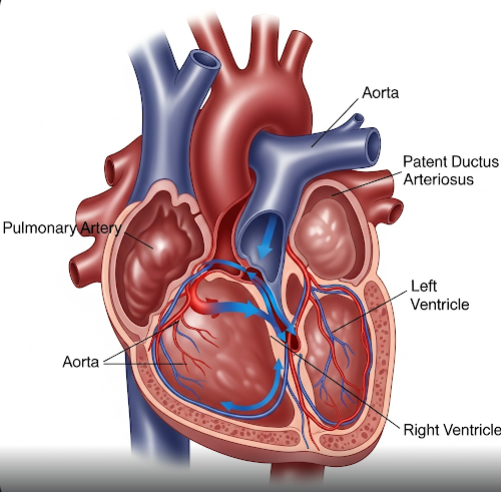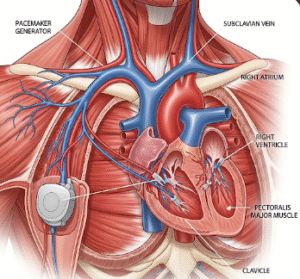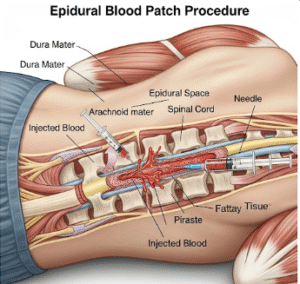Overview
Patent Ductus Arteriosus (PDA) is a congenital heart condition where a fetal blood vessel—the ductus arteriosus—fails to close after birth. This vessel is essential in fetal circulation but is supposed to close shortly after delivery. If it remains open (patent), it can lead to abnormal blood flow between the aorta and the pulmonary artery, placing extra strain on the heart and lungs. The condition can vary from being harmless to life-threatening, depending on the size of the ductus and the baby’s overall health.
What is Patent Ductus Arteriosus?
PDA is a heart defect that occurs when the ductus arteriosus, a normal fetal blood vessel, does not close as it should after birth. This vessel connects the pulmonary artery (which carries blood to the lungs) and the aorta (which carries blood to the body). In fetal life, this bypasses the lungs, which are not used until birth. After birth, the vessel should close within a few days. When it doesn’t, it causes oxygen-rich blood from the aorta to mix with oxygen-poor blood from the pulmonary artery.
Symptoms
Symptoms of PDA depend on the size of the ductus and how much blood it allows to pass through. Common symptoms include:
- Rapid breathing or breathlessness
- Poor feeding and growth in infants
- Fatigue, especially during feeding or exercise
- Sweating while eating or crying
- Heart murmur (a whooshing sound heard with a stethoscope)
- Frequent respiratory infections
- In large PDAs: signs of heart failure
Mild cases may have no noticeable symptoms and are discovered during routine exams.
Causes
The exact cause of PDA is not fully understood, but it may be associated with:
- Premature birth (most common risk factor)
- Genetic conditions (e.g., Down syndrome)
- Congenital rubella infection
- Being female (PDA is more common in girls)
- Family history of congenital heart defects
In full-term babies, it’s often unclear why the ductus fails to close.
Risk Factors
Factors that increase the likelihood of PDA include:
- Premature birth (especially <28 weeks gestation)
- Female sex
- Congenital infections like rubella
- High altitudes (due to lower oxygen levels)
- Family history of congenital heart disease
- Certain genetic disorders like trisomy 21 (Down syndrome)
Complications
If left untreated, PDA can lead to serious health issues, including:
- Heart failure
- Pulmonary hypertension (high blood pressure in lung arteries)
- Endocarditis (infection of the heart lining)
- Arrhythmias (irregular heartbeats)
- Poor growth and development in infants
- Shortened life expectancy if the PDA is large and not treated
Prevention
There is no guaranteed way to prevent PDA, but steps to reduce risk include:
- Proper prenatal care during pregnancy
- Preventing infections like rubella with vaccines before pregnancy
- Monitoring high-risk pregnancies, especially with a family history of heart defects
- Timely treatment of premature babies to encourage ductus closure
Treatment Options in Korea
South Korea offers world-class pediatric cardiology and cardiovascular surgery for PDA, with both non-invasive and surgical options available.
1. Monitoring (Watchful Waiting)
- Small PDAs may close on their own within the first few months of life.
- Regular follow-ups and echocardiograms are used to track progress.
2. Medication
- NSAIDs such as indomethacin or ibuprofen are often used in premature infants to encourage duct closure.
- These are effective in neonates but not older infants or children.
3. Catheter-Based Procedures
- Transcatheter closure is a minimally invasive procedure where a small device is inserted via a catheter to close the PDA.
- Commonly performed in children and adults with moderate-to-large PDAs.
- Available in top Korean hospitals like Seoul National University Hospital, Asan Medical Center, and Samsung Medical Center.
4. Surgery
- Surgical ligation is performed when medication fails or if the PDA is too large.
- Involves a small incision and tying off the ductus.
- Typically safe with excellent outcomes, especially in neonates and infants.
5. Post-Treatment Care
- Most patients recover fully with no long-term limitations.
- Follow-up includes echocardiograms and monitoring for endocarditis risk.













